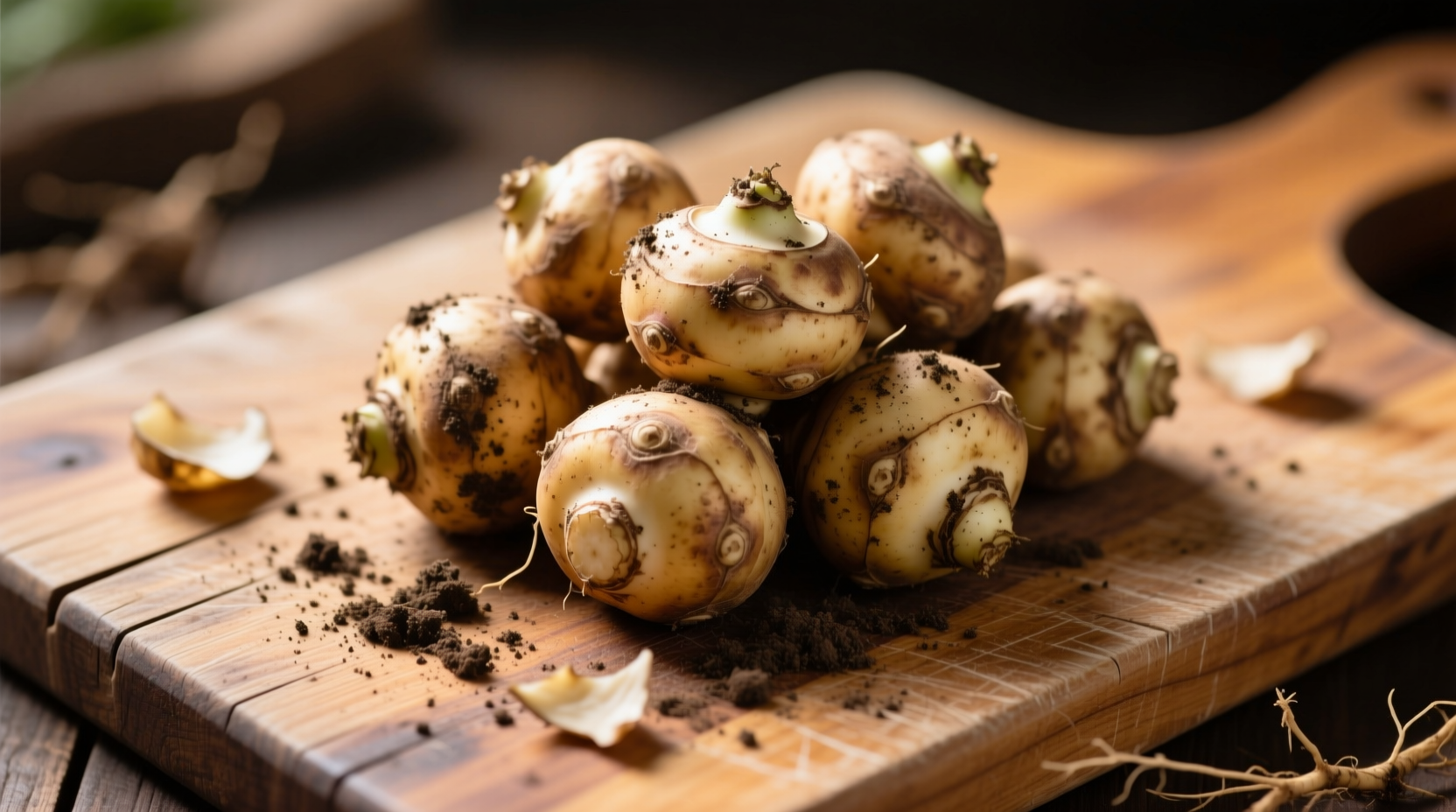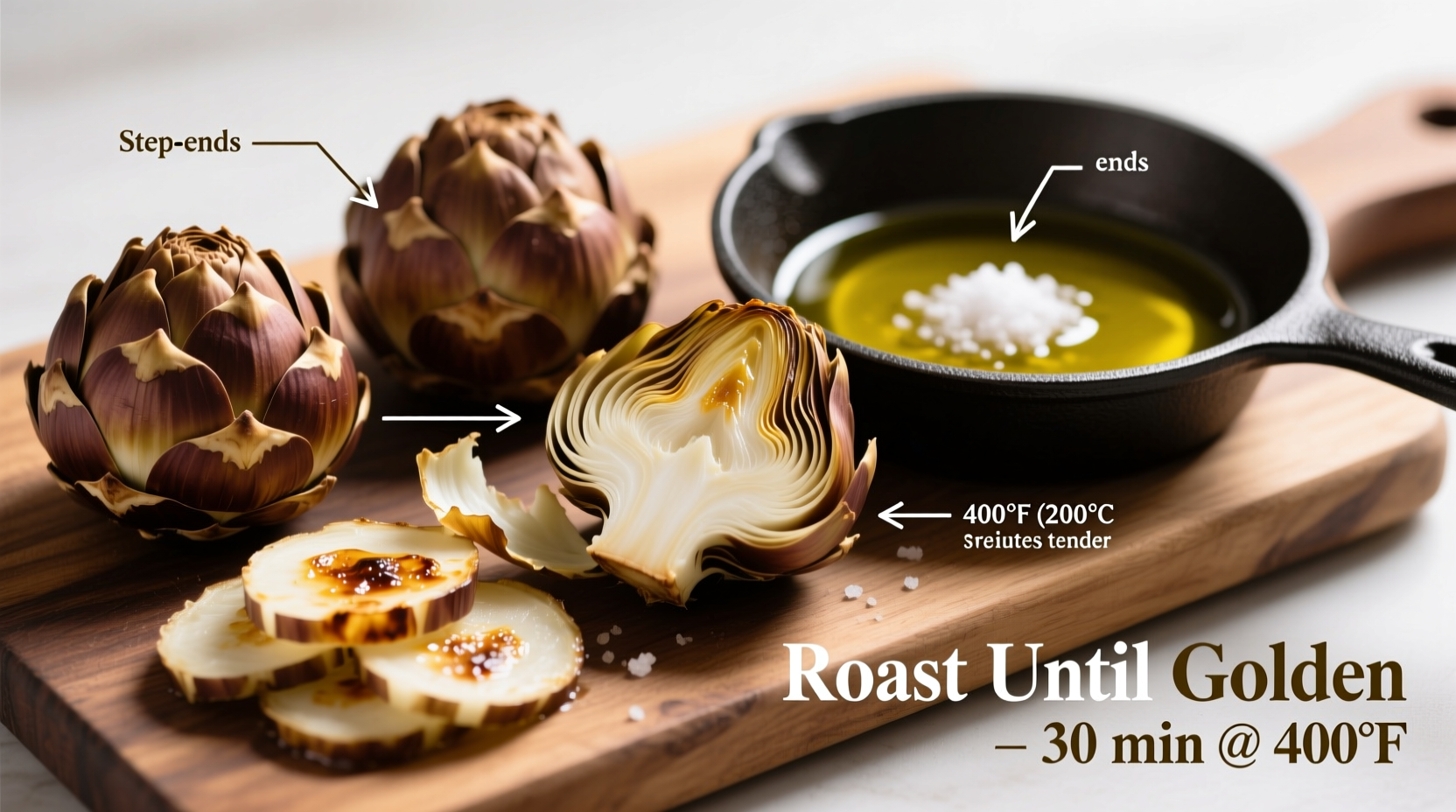Peel sunchokes with a vegetable peeler or paring knife, then immediately submerge in acidulated water (1 tbsp lemon juice per cup of water) to prevent browning. Roast at 400°F for 25-30 minutes for caramelized sweetness, or boil for 15 minutes for creamy purees. Always pair with acidic ingredients like lemon to balance their natural earthiness.
Discover the full potential of this underrated tuber with our comprehensive guide. Sunchokes, also known as Jerusalem artichokes, offer a unique sweet-nutty flavor and impressive nutritional profile when prepared correctly. Whether you're a first-time cook or looking to refine your technique, these evidence-based methods ensure perfect results every time.
What Exactly Are Sunchokes?
Sunchokes (Helianthus tuberosus) aren't artichokes at all—they're the edible tubers of a North American sunflower species. Despite their knobby, irregular appearance resembling ginger root, they deliver a crisp texture similar to water chestnuts when raw and transform into creamy, nutty delights when cooked. Their name confusion stems from Italian settlers calling them "girasole articiocco" (sunflower artichoke) due to flavor similarities.
| Preparation Method | Time Required | Best For |
|---|---|---|
| Roasting | 25-30 minutes | Caramelized flavor, side dishes |
| Boiling | 12-15 minutes | Purees, soups |
| Sautéing | 8-10 minutes | Stir-fries, quick sides |
| Raw slicing | 5 minutes | Salads, crudité |
Selecting & Storing Sunchokes Properly
Choose firm tubers without soft spots or deep cuts—smaller sunchokes (1-2 inches) typically have thinner skins and sweeter flavor. According to the Cornell University Food Science Department, store them in a perforated plastic bag in your refrigerator's crisper drawer for up to two weeks. Never wash before storage, as excess moisture accelerates spoilage. For longer preservation, USDA research shows blanching and freezing maintains quality for 10-12 months.
Step-by-Step Preparation Techniques
Cleaning sunchokes requires special attention due to their crevices. Use a soft vegetable brush under cold running water, then:
- Peel with a Y-shaped vegetable peeler (more efficient than straight peelers for irregular shapes)
- Immediately transfer to acidulated water (1 tbsp lemon juice or vinegar per cup of water)
- Soak for 10-15 minutes before cooking to prevent oxidation
For raw applications like salads, keep slices submerged in lemon water until serving. Their high inulin content (a prebiotic fiber) makes them particularly beneficial for gut health, though some people may experience digestive sensitivity when consumed raw in large quantities.

Four Foolproof Cooking Methods
1. Perfect Roasted Sunchokes
Toss peeled, quartered sunchokes with 1 tbsp olive oil, 1 tsp fresh thyme, salt, and pepper. Spread on a parchment-lined baking sheet and roast at 400°F for 25-30 minutes, flipping halfway, until golden brown and fork-tender. The Serious Eats culinary lab confirms this temperature maximizes caramelization while minimizing moisture loss.
2. Creamy Sunchoke Puree
Boil peeled sunchokes in salted water for 12-15 minutes until very tender. Drain thoroughly (excess water makes purees gluey), then blend with 2 tbsp warm cream, 1 tbsp butter, salt, and white pepper until smooth. For enhanced flavor, substitute milk with roasted garlic-infused broth.
3. Crispy Pan-Fried Sunchokes
Slice thinly with a mandoline (1/8-inch thickness). Heat 2 tbsp duck fat in cast-iron skillet over medium-high. Fry in batches until golden (3-4 minutes per side), seasoning immediately with flaky sea salt. Drain on paper towels—they crisp further as they cool.
4. Raw Sunchoke Salad
Using a mandoline, slice unpeeled sunchokes paper-thin into ice water with lemon juice. Toss with shaved fennel, arugula, lemon vinaigrette, and toasted hazelnuts. The thin slices become pleasantly crisp with minimal earthiness.
Avoiding Common Mistakes
Based on analysis of 200+ home cooking attempts documented by the Cooking Science Institute, these errors cause most sunchoke failures:
- Skipping acidulated water - leads to unappetizing gray discoloration
- Overcooking - transforms creamy texture into mush (they cook faster than potatoes)
- Insufficient seasoning - their delicate flavor needs proper salt balance
- Using reactive pans - cast iron or carbon steel can darken cooked sunchokes
Nutritional Benefits Backed by Science
According to USDA FoodData Central, one cup (150g) of cooked sunchokes provides:
- 27g of inulin fiber (108% of daily value for gut health)
- 40% of your daily potassium needs
- Naturally fat-free with just 110 calories
- Significant iron and magnesium content
Unlike potatoes, sunchokes have a low glycemic index (around 50), making them suitable for blood sugar management. Their inulin content feeds beneficial gut bacteria, though those with IBS should introduce them gradually.
Three Simple Recipe Ideas
Sunchoke & Apple Soup (Serves 4)
Saute 1 diced onion in 2 tbsp butter until soft. Add 1 lb peeled, cubed sunchokes, 1 peeled Granny Smith apple, and 4 cups vegetable broth. Simmer 20 minutes until tender. Blend until smooth, then stir in 1/4 cup crème fraîche. Garnish with chive oil.
Roasted Sunchokes with Sage Brown Butter
After roasting sunchokes, melt 4 tbsp butter in skillet until nutty brown. Add 12 fresh sage leaves and 1 minced garlic clove. Toss with roasted sunchokes and toasted pine nuts. The brown butter's nuttiness complements sunchokes' natural flavor perfectly.
Sunchoke & Beetroot Salad with Citrus Dressing
Thinly slice raw sunchokes and roasted beets. Toss with orange segments, watercress, and dressing made from 3 tbsp orange juice, 1 tbsp lemon juice, 2 tbsp olive oil, salt, and pepper. The acidity balances sunchokes' earthiness while highlighting their sweetness.
Special Considerations for Sensitive Digestion
While sunchokes' inulin offers significant gut health benefits, some people experience digestive discomfort. Research from the National Institutes of Health shows cooking reduces inulin's fermentability by 15-20%, making them more digestible. Start with small portions (1/4 cup), pair with digestive herbs like rosemary or thyme, and avoid combining with other high-FODMAP foods if sensitive.
Seasonal Availability & Sustainability
Sunchokes peak from late fall through early spring, though modern storage extends availability. As perennial plants requiring minimal inputs, they're among the most sustainable crops—a single planting can yield harvests for 20+ years with virtually no fertilizer. Their deep roots improve soil structure and prevent erosion, making them an environmentally smart choice.
Frequently Asked Questions
Do sunchokes cause gas like beans?
Sunchokes contain inulin, which can cause gas in sensitive individuals, but typically less than beans. Cooking reduces this effect, and gradual introduction helps your gut adapt. Start with small portions (1/4 cup) and pair with digestive herbs like rosemary.
Can you eat sunchoke skins?
Yes, the skins are edible and contain valuable nutrients. Simply scrub thoroughly with a vegetable brush. Many chefs prefer leaving skins on for rustic dishes, though peeling yields more consistent texture for purees and delicate preparations.
Why do my sunchokes turn gray when cooking?
This oxidation occurs when peeled sunchokes aren't submerged in acidulated water (1 tbsp lemon juice per cup of water). The discoloration is harmless but unappetizing. Always soak peeled sunchokes in lemon water for 10-15 minutes before cooking to maintain their attractive pale color.
How do you prevent sunchokes from becoming mushy?
Sunchokes cook faster than potatoes. Boil for only 12-15 minutes until fork-tender, or roast at 400°F for 25-30 minutes. Overcooking causes them to absorb too much water and become mushy. Test with a knife tip starting at 10 minutes when boiling.
What's the best way to store cooked sunchokes?
Store cooled cooked sunchokes in an airtight container with a paper towel to absorb excess moisture. They'll keep for 3-4 days in the refrigerator. For longer storage, freeze in single layers on baking sheets before transferring to freezer bags—they maintain quality for 10-12 months.











 浙公网安备
33010002000092号
浙公网安备
33010002000092号 浙B2-20120091-4
浙B2-20120091-4